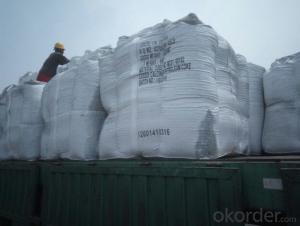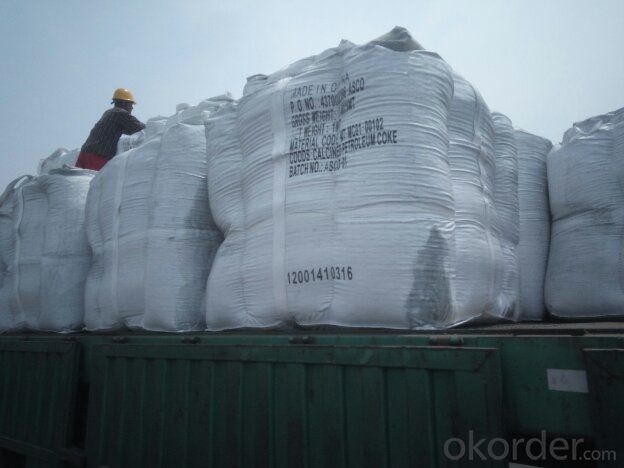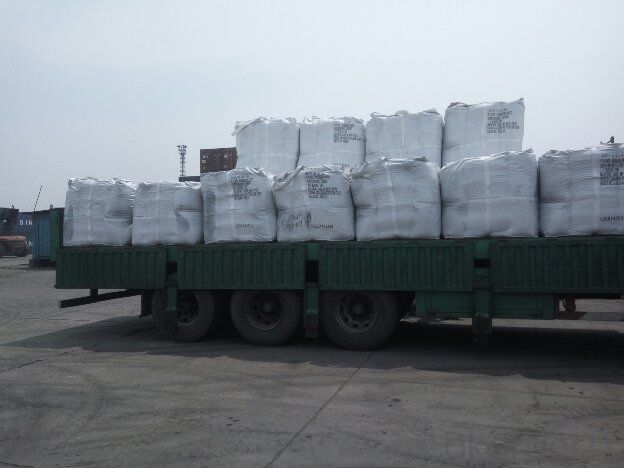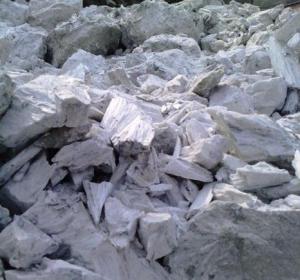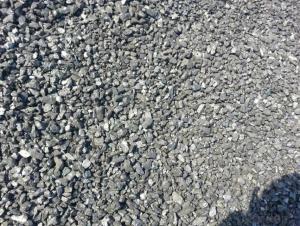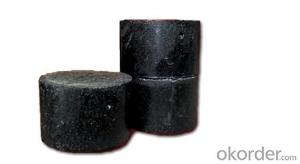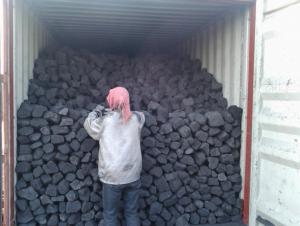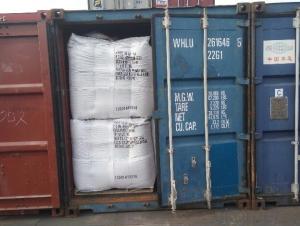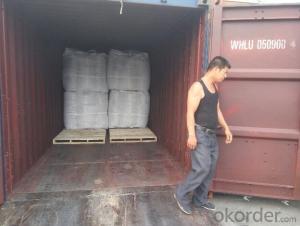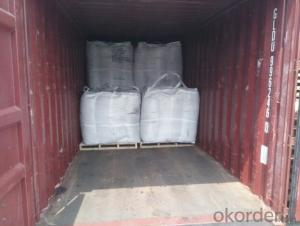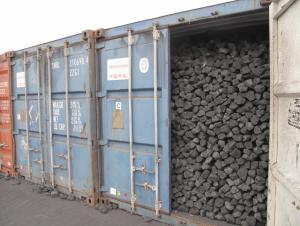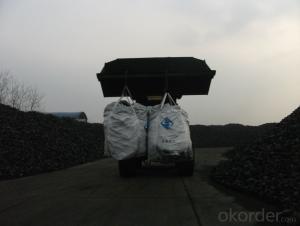10% Ash Foundry Coke for Foundry Plant
- Loading Port:
- Shanghai
- Payment Terms:
- TT OR LC
- Min Order Qty:
- 20 m.t.
- Supply Capability:
- 1000 m.t./month
OKorder Service Pledge
OKorder Financial Service
You Might Also Like
Brief Introduction
Foundry Coke is the main fuel of melting iron in the oven. It can melt the materials in the over, make the iron reach great heat, and keep good air permeability by sustain stock column. Thus, the foundry coke should have the characteristics of big block, low reactivity, small porocity, enough anti-crush strengh, low ash and low sulphur.
The coke handled by our cooperation is made from superior coking coal of Shanxi province. Provided with the advantages of low ash, low sulphur and high carbon. Our coke is well sold in European, American, Japanese and South-east Asian markets. Our owned Coke plant are located in Shanxi Province and supplying of you many kinds of coke.
we supply Foundry Coke long-term, its characteristic is best strength, low sulfur and phosphorus,thermal stability.
Specifications:
ASH % | 8% max | 10% max | 12% max |
V.M.% MAX | 1.5% max | 1.5% max | 2% max |
SULFUR % | 0.65% max | 0.65% max | 0.7% max |
MOISTURE | 5% max | 5% max | 5% max |
Size | 80mm-120mm,80-150,100-150mm, or as request | ||
Features
1. Our quality is always quite good and stable which is producing and packing according to customers' requirements.
2. Putting Client profile into first, achieved mutual benefit.
3. Good partner on business. It's a good and wise choice for customers' to purchase from us. It's our great honor to cooperate with you.
4. We can supply documents as follows:
- bill of loading,
-Invoice,
-Packing List
-Insurance
-standard inspection pictures of the container as specified by INSPECTORATE
-or more requested by buyer.
Pictures

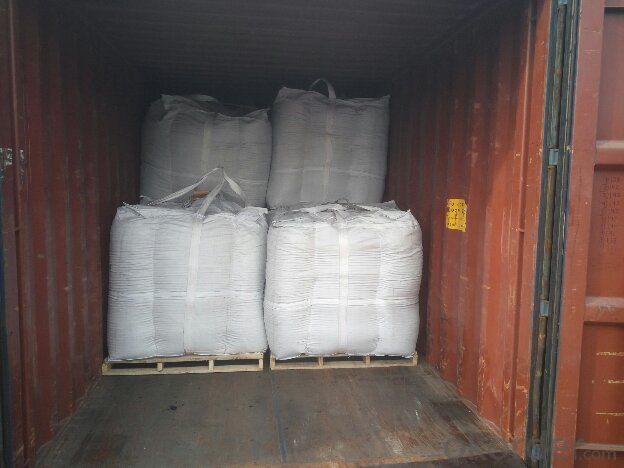
FAQ
1. What is the packing?
In 25kg bag/ In jumbo bags without pallet/ Two jumbo bags with one pallet/ or as customers’ request
2. What is the production capacity?
10 thousand tons per month
3 What is payment term?
Irrevocable LC at sight/ 20% down payment by T/T and 80% against BL copy byT/T/ or to be discussed
4 What is the service?
We will send sample to the third party(CIQ, CCIC, SGS,BV or to be discussed) for checking, and present the test certificate and loading repot of shipment.
- Q: Power plant water treatment plant, there is a carbon removal device, the expert pointing out what the principle is it?
- The solubility of carbon dioxide gas in water obeys Henry's law, i.e., the solubility of gases in solution is proportional to the partial pressure of the gas on the liquid surface at a given temperature. So only to reduce carbon dioxide gas in contact with the water in the partial pressure of carbon dioxide dissolved in water and free from water will be desorbed, which will remove carbon dioxide free water, carbon remover is the principle of design!
- Q: How is carbon formed?
- Carbon is formed through various natural processes, primarily through the decay and decomposition of organic matter such as plants and animals. Additionally, carbon can be formed through volcanic activity and the burning of fossil fuels.
- Q: What are the impacts of carbon emissions on the stability of wetlands?
- Carbon emissions have significant impacts on the stability of wetlands, which are highly sensitive ecosystems. One of the main consequences of carbon emissions is the increase in greenhouse gases, particularly carbon dioxide, in the atmosphere. This leads to global climate change and subsequent alterations in weather patterns, temperature, and precipitation. These changes in climate have direct and indirect effects on wetlands. Firstly, rising temperatures can accelerate the rate of evaporation, leading to a decrease in water levels within wetlands. This can lead to the drying out of wetland habitats, disrupting the delicate balance of species that rely on these areas for survival. As wetlands dry up, the plants and animals that depend on them for food, shelter, and breeding grounds are threatened. Additionally, increased carbon emissions contribute to sea-level rise, which poses a significant threat to coastal wetlands. Rising sea levels can cause saltwater intrusion into freshwater wetlands, leading to salinization of the soil and negatively impacting the vegetation and organisms that inhabit these areas. This intrusion also disrupts the delicate balance between freshwater and saltwater, affecting the diverse ecological functions provided by wetlands, such as water filtration, nutrient cycling, and flood control. Furthermore, carbon emissions contribute to the acidification of water bodies, including wetlands. The absorption of excess carbon dioxide by water leads to a decrease in pH levels, making the water more acidic. Acidic water can harm the plants, animals, and microorganisms in wetlands, affecting their growth, reproduction, and overall survival. This disruption in the wetland ecosystem can have cascading effects on the entire food web and biodiversity of these areas. Overall, carbon emissions have a profound impact on the stability of wetlands. The alteration of climate patterns, sea-level rise, and acidification of water bodies are all consequences of carbon emissions that threaten the delicate balance and ecological functions of wetlands. Recognizing the importance of wetlands and effectively mitigating carbon emissions is crucial for preserving these vital ecosystems and the myriad of benefits they provide, including flood mitigation, water purification, and habitat for numerous plant and animal species.
- Q: How does carbon affect the formation of smog?
- Carbon plays a significant role in the formation of smog through the process of photochemical reactions. When carbon-based pollutants, such as automobile exhaust and industrial emissions, are released into the atmosphere, they can undergo reactions with other pollutants and sunlight. This leads to the production of ground-level ozone, a key component of smog. Additionally, carbon-containing compounds can contribute to the formation of particulate matter, which further exacerbates smog formation.
- Q: What are the effects of carbon emissions on the stability of coastal ecosystems?
- Carbon emissions have significant negative effects on the stability of coastal ecosystems. The increased concentration of carbon dioxide in the atmosphere leads to ocean acidification, which disrupts the delicate balance of marine ecosystems. This acidity affects the growth and development of various organisms such as corals, shellfish, and other calcifying organisms, jeopardizing the health of coral reefs and shellfish populations. Additionally, rising sea levels, a result of climate change caused by carbon emissions, threaten coastal habitats, including wetlands and mangroves, which serve as critical nurseries and protective buffers against storms. Overall, carbon emissions contribute to the degradation and vulnerability of coastal ecosystems, compromising their stability and the services they provide to both marine life and human communities.
- Q: What are the consequences of increased carbon emissions on human migration patterns?
- Increased carbon emissions have significant consequences on human migration patterns. One of the most prominent effects is the exacerbation of climate change, leading to more frequent and intense natural disasters such as hurricanes, floods, and droughts. These extreme weather events can devastate communities, destroy infrastructure, and disrupt livelihoods, forcing people to migrate in search of safer and more stable environments. Rising sea levels, another consequence of carbon emissions, pose a significant threat to coastal regions and island nations. As sea levels continue to rise, low-lying areas become more prone to flooding and coastal erosion, making them uninhabitable. This displacement of populations, commonly referred to as climate refugees, can lead to mass migrations, putting additional strain on resources and infrastructure in destination areas. Moreover, carbon emissions contribute to changes in temperature and precipitation patterns, which can have a profound impact on agricultural activities. Shifts in growing seasons, increased frequency of droughts or floods, and the spread of pests and diseases can negatively affect crop yields and food security. This disruption in the availability of food and resources can push vulnerable populations to migrate in search of better livelihoods and food sources. The consequences of increased carbon emissions on human migration patterns also extend to health issues. Climate change can lead to the spread of diseases, such as malaria and dengue fever, as well as worsen air pollution, exacerbating respiratory problems. These health risks can force individuals and communities to relocate to areas with better healthcare infrastructure and conditions. In summary, increased carbon emissions have wide-ranging consequences on human migration patterns. The intensification of climate change, rising sea levels, disruptions to agriculture, and health risks all contribute to the displacement of populations, creating a need for individuals and communities to seek safer and more stable environments. Addressing carbon emissions and mitigating climate change is essential to minimize the negative impacts on human migration and ensure a sustainable future.
- Q: How does carbon dioxide affect waste management processes?
- The impact of carbon dioxide on waste management processes is significant. One way it influences waste management is through the decomposition of organic waste. When organic waste, such as food scraps or yard waste, is sent to landfills, it decomposes without oxygen, resulting in the production of methane. Methane is a powerful greenhouse gas that contributes to climate change, being approximately 25 times more effective at trapping heat in the atmosphere than carbon dioxide over a 100-year period. Thus, the presence of carbon dioxide indirectly leads to increased methane emissions, exacerbating the greenhouse effect. Additionally, carbon dioxide emissions can occur during waste management activities like transportation and disposal. Vehicles that run on fossil fuels are used to collect and transport waste to landfills or incineration facilities, releasing carbon dioxide into the atmosphere. Furthermore, the incineration process itself produces carbon dioxide as a byproduct. To mitigate the impact of carbon dioxide on waste management, several strategies can be employed. Firstly, efforts to reduce waste and recycle can decrease the need for landfilling or incineration, consequently reducing carbon dioxide emissions. Moreover, implementing waste-to-energy technologies, such as anaerobic digestion or landfill gas capture, can harness the energy potential of organic waste while reducing methane emissions. Anaerobic digestion converts organic waste into biogas, which can be used for electricity or heat generation. Landfill gas capture systems collect methane emitted from landfills and repurpose it for energy production. Lastly, transitioning to low-carbon transportation options, like electric or hybrid vehicles, for waste collection and transportation can help decrease carbon dioxide emissions associated with waste management processes. In conclusion, carbon dioxide impacts waste management by contributing to methane production during organic waste decomposition and by generating emissions during waste transportation and disposal. By implementing waste reduction strategies, waste-to-energy technologies, and transitioning to low-carbon transportation options, the impact of carbon dioxide on waste management can be minimized, resulting in more sustainable and environmentally friendly waste management practices.
- Q: How does carbon affect the water cycle?
- The water cycle is affected by carbon in various ways. To begin with, carbon plays a vital role in the atmosphere as carbon dioxide (CO2). Human activities such as burning fossil fuels, deforestation, and industrial processes have caused an increase in the concentration of CO2 in the atmosphere. This rise in carbon dioxide levels leads to global warming and climate change, which then impacts the water cycle. One significant consequence of increased carbon dioxide is the alteration of precipitation patterns. Carbon emissions cause warmer temperatures, resulting in more evaporation from bodies of water. This leads to an increase in water vapor in the atmosphere. The additional moisture can lead to intensified rainfall in certain areas, causing floods. On the other hand, some regions may experience droughts as evaporation rates surpass precipitation rates. These changes disrupt the balance of the water cycle and affect the availability of water resources for both humans and natural systems. Moreover, carbon dioxide dissolved in water forms carbonic acid, which lowers the pH level of oceans and bodies of water. This process, known as ocean acidification, has a negative impact on marine life, including shellfish, corals, and other organisms that rely on calcium carbonate to build their shells or skeletons. Consequently, the disruption of these species can have a domino effect through the food chain, ultimately affecting the entire ecosystem. Additionally, carbon influences the melting of polar ice caps and glaciers. Increased carbon emissions have caused a rise in global temperatures, which accelerates the melting process. As the ice melts, it releases freshwater into the oceans, leading to a rise in sea levels. This can have devastating consequences for coastal communities, increasing the risks of flooding and erosion. In conclusion, carbon emissions, mainly in the form of carbon dioxide, have a significant impact on the water cycle. They disrupt precipitation patterns, contribute to ocean acidification, and accelerate ice melting. All of these effects disturb the delicate balance of the water cycle and have far-reaching consequences for ecosystems and communities worldwide.
- Q: What are the impacts of carbon emissions on the stability of coral reefs?
- The stability of coral reefs is significantly affected by carbon emissions. One of the primary outcomes of carbon emissions is the occurrence of ocean acidification, which happens when the ocean absorbs carbon dioxide. This results in a decrease in the water's pH level, making it more acidic. Corals are extremely sensitive to changes in pH levels, and as the water becomes more acidic, it becomes harder for them to build and maintain their calcium carbonate skeletons. The increased acidity of the water also impacts the growth and survival of other organisms that form the foundation of coral reef ecosystems, such as algae and shellfish. These organisms play a vital role in providing food and a habitat for many species, including corals. As their populations decline due to acidification, the entire reef ecosystem becomes destabilized. Another consequence of carbon emissions on coral reefs is the warming of the ocean. Carbon dioxide acts as a greenhouse gas, trapping heat in the atmosphere and causing global temperatures to rise. This rise in temperature leads to coral bleaching, a process where corals expel the symbiotic algae living within their tissues. The loss of these algae deprives corals of their main source of nutrition and gives them a bleached appearance. If the water temperatures remain high for an extended period, corals may die, resulting in the degradation of the reef structure. Furthermore, carbon emissions contribute to the rise in sea levels, which poses a threat to the stability of coral reefs. Increasing sea levels increase the risk of coastal erosion and flooding, which can damage or destroy coral reef habitats. Additionally, the intensified and more frequent storms, a consequence of climate change, can physically harm coral reefs, making them more vulnerable to disease and preventing their recovery. In summary, carbon emissions have a harmful impact on the stability of coral reefs. Ocean acidification, coral bleaching, rising sea levels, and increased storm activity all collaborate to weaken and degrade these fragile ecosystems. It is crucial to reduce carbon emissions and take action to mitigate climate change to safeguard and preserve the health of coral reefs and the numerous species that rely on them.
- Q: I saw a cell phone in the magazine, the global release of 900, no camera, what function is F1 carbon fiber material, actually sold 40000 yuan a piece!.. Everyone said that the circulation is so small, worth so much money? Or carbon fiber material worth so much money?
- See where, in a car for example transformation kit, with super run even if the civil area shape roughly the same but the price difference, if you feel that things are expensive, natural carbon prices go up, in fact carbon species layout production process characteristics of professional strength lot, do not understand
Send your message to us
10% Ash Foundry Coke for Foundry Plant
- Loading Port:
- Shanghai
- Payment Terms:
- TT OR LC
- Min Order Qty:
- 20 m.t.
- Supply Capability:
- 1000 m.t./month
OKorder Service Pledge
OKorder Financial Service
Similar products
Hot products
Hot Searches
Related keywords
